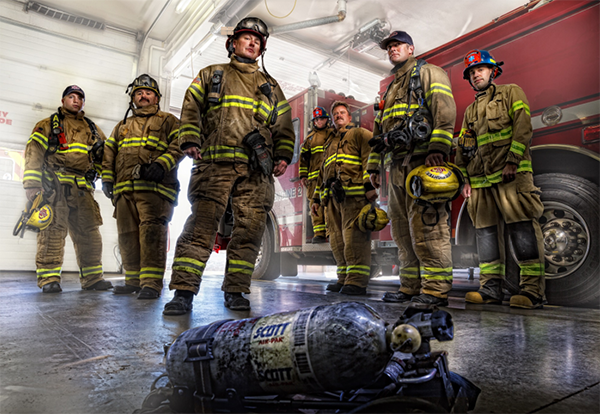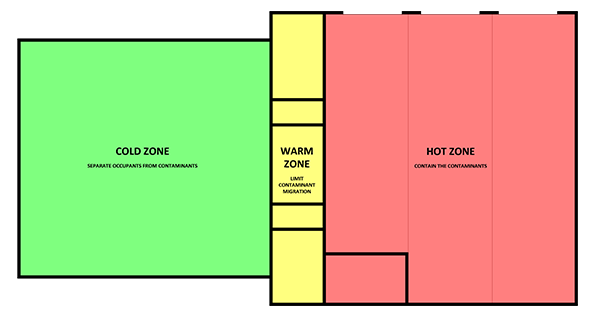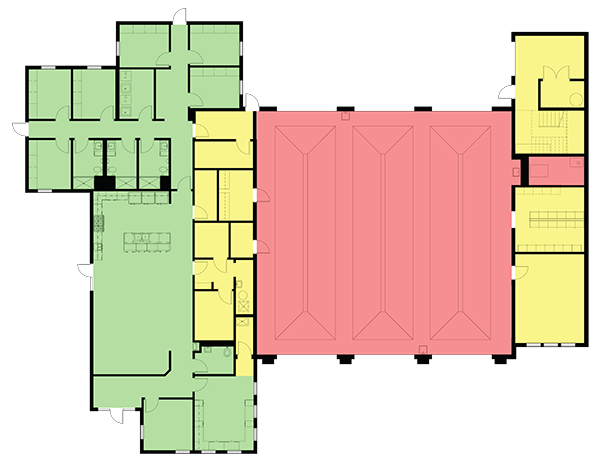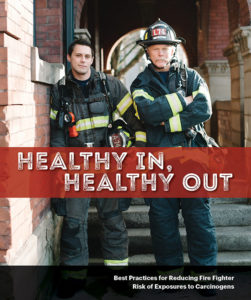
Fire fighters and other first responders put their lives on the line every day to keep communities safe. As Architect and Engineers, it’s our duty to do all we can to design fire stations that support fire fighter health both passively and actively. While this is too expansive a topic to cover in a single blog post, it is the intent of this article to provide an introduction to the major concepts that go into healthy fire station design.
The key methods fall into two basic categories: Passive and Active.

Passive methods are those which are related more to the layout of the building, program adjacencies, material selection, etc. Passive methods include:
- Implementation of Hot Zone Design concepts.
- Hot Zone – Rooms and spaces where exposure to contaminants is high.
- Warm Zone – Operational support spaces, located as a buffer between the Hot Zone and Cold Zone to help control the spread of contaminants.
- Cold Zone – Living, sleeping, and community spaces where exposure to contaminants is low.
- More in-depth information on Hot Zone Design can be found here:
- Use of intermediary spaces (vestibules, airlocks, etc.) to aid in the control of contaminants.
- Interior space layout which provides a distinct decontamination path from the exterior of building to the living spaces which severely limits if not eliminates opportunities for cross-contamination.
- Use of hard surface finishes in high contamination areas that can be easily cleaned and will stand up to multiple cleanings on a monthly, weekly, and sometimes daily basis.

Active methods are those which are related to the building systems and the interior environment. Active methods include:
- Apparatus Exhaust Control
- Mass Extraction
- Direct Capture
- Combination of the above.
- Air Pressurization Zones
- High Contaminant Levels – Negative Pressure
- Intermediate Spaces – Neutral Pressure
- Low Contaminant Levels – Positive Pressure
- Direct Exhaust of Operational Support Spaces
- PPE (Personal Protective Equipment) / Turn-out Gear Storage
- Decontamination/Gear Extraction Rooms
- Maintenance Workshops
Utilizing these methods, alone or in combination, the goal is to establish a balance between supporting fire fighter health and operational efficiency of the station which must ultimately serve the department’s mission. This balance is essential since any design or design element that hampers the operation of the station will not be sustainable over time and will ultimately be pushed aside. A successful design will adapt these methods to work with and in support of the department’s operational goals, thereby helping to ensure their longevity.
If you would like to learn how your current fire station can be remodeled to become a healthy station, please contact us. We will be happy to provide an assessment.








